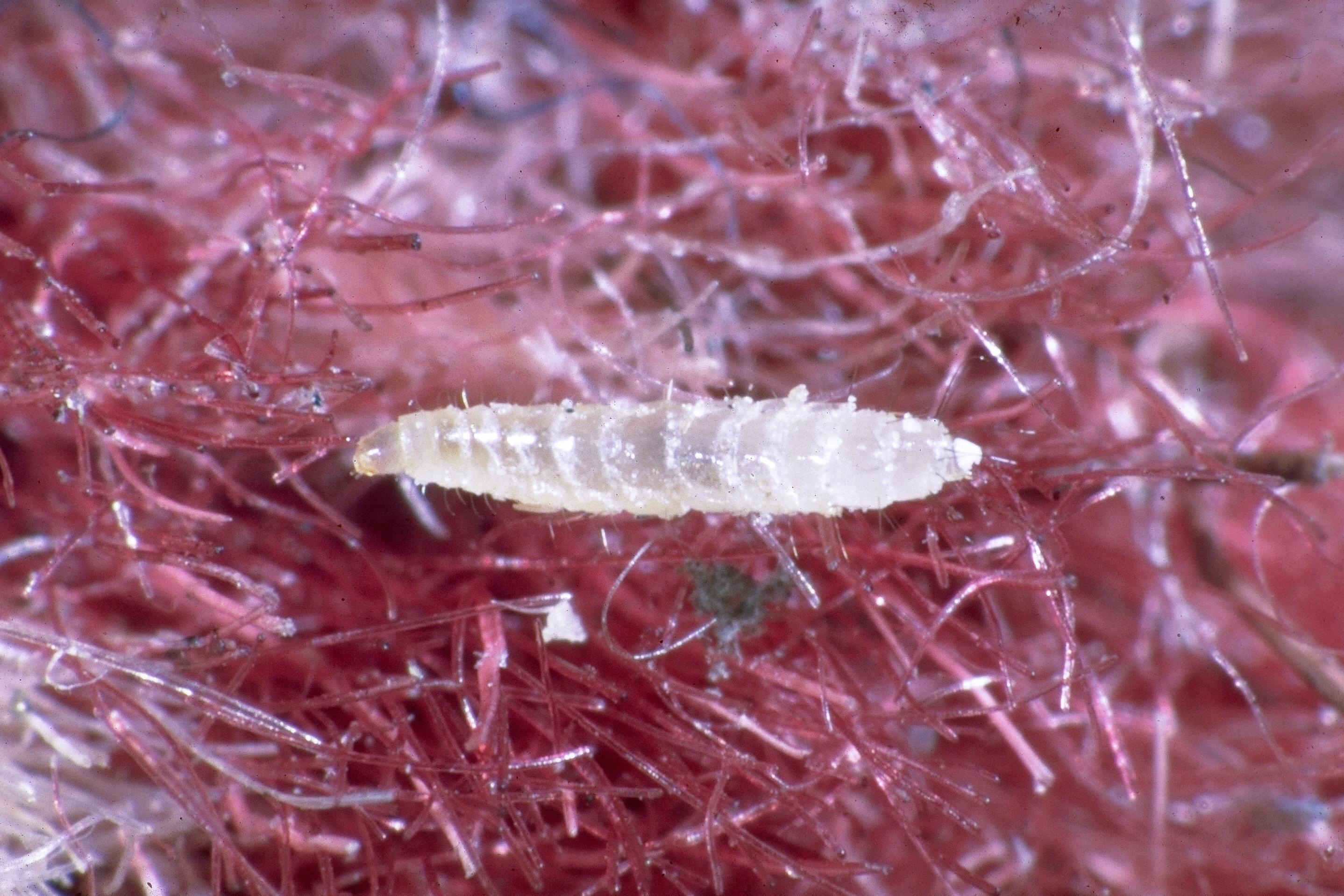About fleas
-
The cat flea is the most common flea encountered in homes. It survives on both dogs and cats and will bite humans.
-
Fleas are important pests for several reasons. Not only do they bite but they can also transmit several diseases such as the double-pored dog tapeworm, which can infect dogs, cats, or humans.
-
Flea bite dermatitis is the most common skin disease in dogs and cats.
-
Flea control in the home and on the pet is very important.
Flea biology
-
Adult cat fleas are about 1/16-1/8 inch long, brownish-black and flattened from side to side. They are wingless but can jump considerable distances for their size. Each body segment has backward projecting spines that help hold the flea in pets fur.
-
Female fleas lay 4-8 eggs after each blood meal. The eggs are laid on the host but fall off easily. The eggs are found in the pet's bedding or in areas where they frequent. Eggs are oval, whitish, and only about 1/64 inch long. They hatch in 1-12 days depending on temperature and humidity.
-
Larvae are worm-like, whitish in color and about twice as long as the adult flea. Larvae do not bite. They feed on organic debris including the dried fecal material from adult fleas. They require dried fecal material from adult fleas to complete their development. The adult fecal material is digested blood.
-
Larval development can take from 1-2 weeks to several months depending on temperature and humidity.
-
When ready to pupate the larva spins a silk cocoon and incorporates debris to help camouflage it. The pupal stage may last 4-14 days under ideal conditions or up to a year under adverse conditions.
-
Adult fleas generally seek a blood meal on the second day after emergence. If no host is available, they may live for several months on stored body fat.
-
Once the fleas find a suitable host, they tend to spend all of their time on the host where they feed, mate, and lay eggs.
-
Adult fleas can live up to a year. However, many only live a few days because grooming by the animal host removes up to 50% of the fleas.
-
Cat fleas may also feed on other hosts such as opossum, fox, and rats.

Flea larva
Fleas in homes with no pets
-
Fleas may be present in a building where there are no pets.
-
They can jump (6”) onto a person’s shoes or trousers and be carried inside.
-
They may also occur in a building, such as a vacation home, that has been vacant for as long as six months. Their persistence is due to the long pupal period, ability of the adults to survive for months without food, and because the adult fleas have not been removed by routine vacuuming.
-
Other sources of fleas invading homes may be wild animals such as squirrels or raccoons nesting in a chimney, attic or crawl space. The animal(s) should be trapped and/or excluded from the building and the nesting area cleaned and treated for fleas.
Indoor management
-
The primary control strategy is thoroughly vacuuming the home or building. Vacuum all upholstered furniture, under furniture, and all floors. Pay particular attention to areas where the pet sleeps or frequents and routes of travel through the house. Also vacuum along edges, in corners, and areas where dust develops. Dispose of the bag when finished.
-
Shampooing (especially steam cleaning) rugs and carpeting is also an effective treatment for killing and removing many fleas. The pet’s bedding should also be cleaned on a regular basis.
-
Residual insecticides (such as Precor 2000) can be used to treat carpeted areas and cracks and crevices. This product contains a residual insecticide to kill adult fleas and an insect growth regulator to prevent egg hatch and development of larvae. Read and follow the label directions. For severe flea infestations, a professional pest control company may be needed.
Flea control on your pet
-
Use a flea comb on the pet to regularly remove adult fleas.
-
Check with your veterinarian to see which material is best for flea control on your pet.
-
Consider restricting the pet’s access to bedrooms, attics, basements, or wherever cleaning may be difficult or fleas may be a particular problem.
Control fleas outdoors
-
Fleas are seldom an outdoor problem unless the pet spends all of its' time outdoors. If the pet is restricted to a fenced area, such as a dog run, it may be necessary to treat with an insecticide. Consult your veterinarian before treating the area with an insecticide.
-
Fleas prefer a protected, moist environment away from direct sunlight. However, spot treating pet resting areas may be necessary. These areas may be treated with insecticidal soap or pyrethrin sprays. Also, either drying out or heavily watering of these areas kills eggs and larvae. Again, consult your veterinarian before treating with an insecticide.
Rev. 2020
